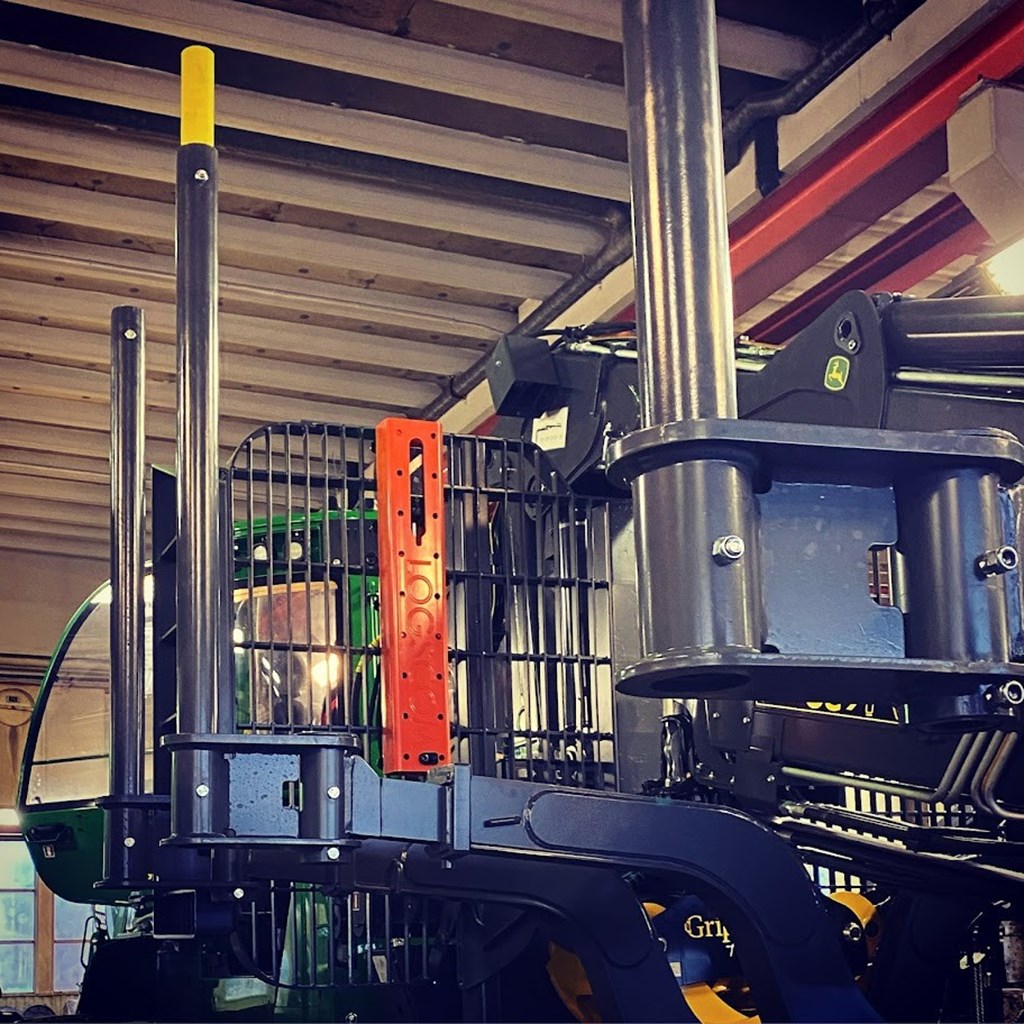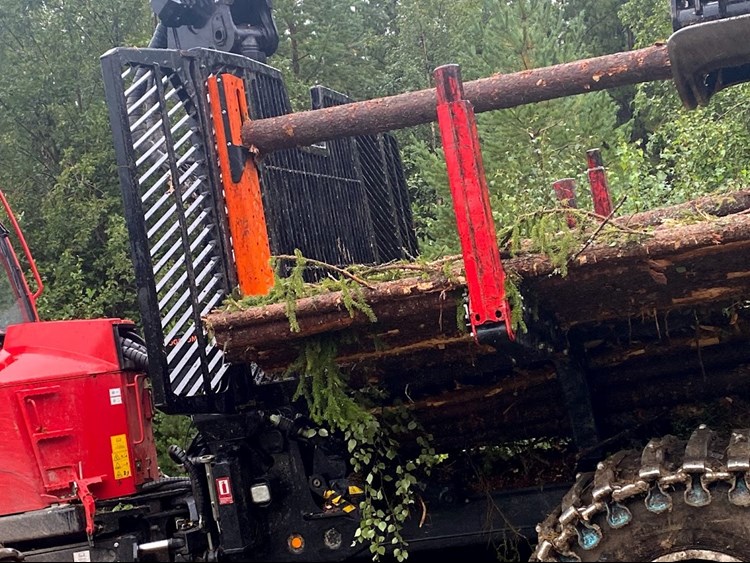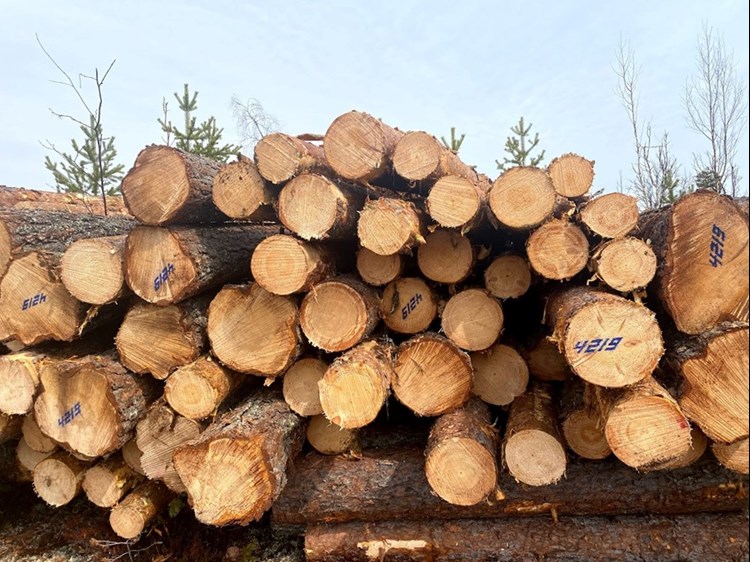
Innovative Timber Labelling Makes the Forrest a Winner
Logscom AB in Åsele has eliminated the last manual step in harvesting forest. Their automated timber labelling system, which is built directly into the harvesting machines, increases the efficiency and improves the working environment in forestry. But the biggest winner is the forest itself.
Martin Englund, CEO and founder of Logscom, grew up among the forestry machines in the family company Gigsele Transport. Both the father and the uncles were entrepreneurs in forestry.
- I early on saw the need to remove the only manual step that remained, the timber labelling by hand, Martin says.
Martin originally started his company as a side-line, but for the past four years he has been running Logscom full time, together with co-owner Christoffer Rönnberg.
- With our smart system, the logs are marked in the harvesting machines, Martin explains. No manual handling is required anymore!

Christoffer Rönnberg co-owner and Martin Englund CEO and founder, Logscom AB in Åsele. Photo: Ylva Lie Andersson.
Printers in the Machines
In Sweden, two types of machines working together in harvesting forest are mainly used. The harvester does the felling, delimbing and bucking of the trees at the site. The forwarder collects and loads the timber for further transport out of the forest.
The Logscom timber labelling system consists of an ink jet printer which is built into the vehicle. The printer is located in the harvester head, at the far end of the crown tip. When the harvester processes the tree, the logs are automatically marked. In the forwarder it is the driver who marks the logs by holding them against the printer, which is placed on the forwarder gate, a partition wall between the cargo space and the cab of the forwarder.

The printer is placed at the harvester head. When the log is in the right position the driver presses a pedal in the cab and the log has been labelled. Photo: Logscom.
System Which Creates Added Value
The timber harvested must be marked before it is processed. The traditional way of labelling the logs is both time consuming and risky. It is done with a hand stamp at the end of the working day, often with poor light and the employees tired after a long day in the woods.
- There is a big risk of getting hurt in the dark among thicket and rocks, says Martin. It is also a time-consuming job. Our system increases the efficiency and profitability while improving the work conditions and well-being for those who work in the forest, he says and continues:
- It is a unique combination and exciting to be involved and create added value in that way. But the most important thing is still the sustainability aspect. The forest is the big winner, Martin determines.
Green Solutions
The forest is a green industry, both figuratively and literally speaking, and its importance in overcoming the climate challenges cannot be underestimated. It is important to make the forestry efficient and not harvest more than necessary of the renewable resource. Logscom’s automatic solutions for labelling timber are a piece of the puzzle towards a sustainable future. Martin gives us some examples:
- When we know where the log comes from, we can use the data to determine the solidity of the wood. It is even possible to know from which part of the tree the log comes, he says. By Using correct timber, the thickness of e.g. glulam can be reduced and we use less of the material.
- If we see it from a forest perspective, he continues, it means that we do not have to harvest as much forest to ensure getting enough quality raw material for a specific end product.
- When the timber is marked with place of growth and date in the machine when harvested, it becomes easier to prioritize the oldest timber and use it first. Wood which is allowed to lie for a long time can get blue-stained and once high-quality wood may, in worst case, be pressure-impregnated and used for verandas instead of being used in stable roof constructions, Martin explains. To be able to choose the oldest harvested timber first also decreases the overuse of bleach in the pulp industry, which is needed when debarking is made more difficult due old raw materials.

Logscom has developed an automated system for labelling timber which is built into the forestry machines. Photo: Logscom.
Logscom’s solutions for labelling are not only interesting for entrepreneurs and forestry companies. The company is also involved in research projects together with actors in sustainable forestry, both in Sweden and Norway. Labelling directly in the machine, linking the log to its origin, means that you can learn more about which kind of wood is suitable for which end products, depending on where it was grown. It naturally promotes a more efficient use of the forest resources.
A Bright Future
What are the plans for the future? Anything new and exciting going on?
When Martin looks ahead, he still looks forward the most to meet the customers again.
- No, when we soon can put this pandemic behind us, it is going to be great to be able to arrange events on site in Åsele, like we used to. I am also looking forward to the exhibitions where we can demonstrate our systems to visitors and potential customers, he says.
Read more about Logscom here!
